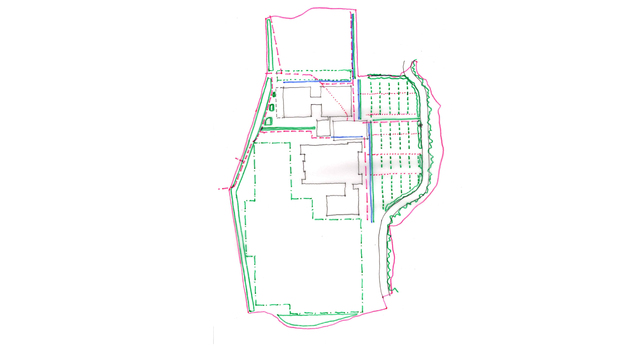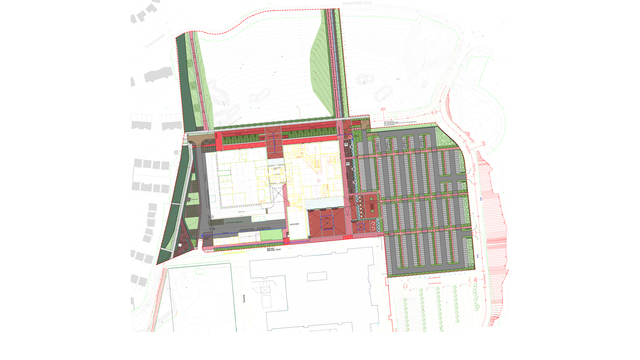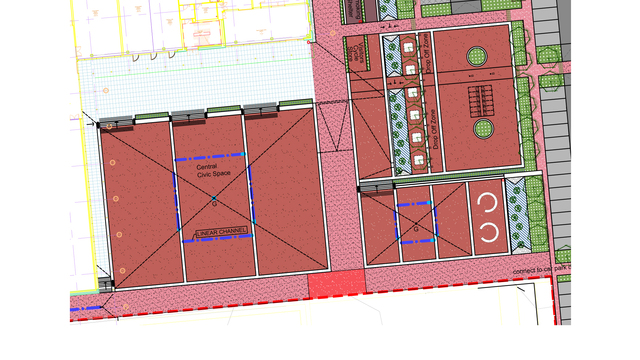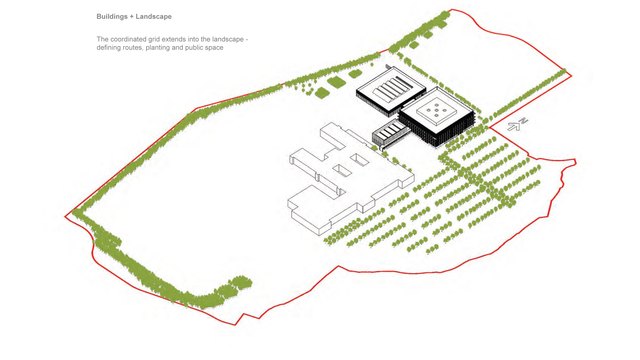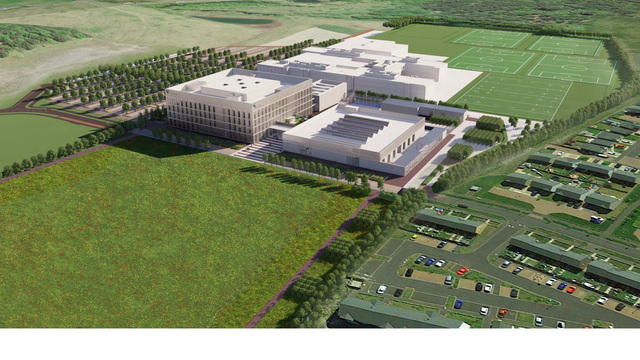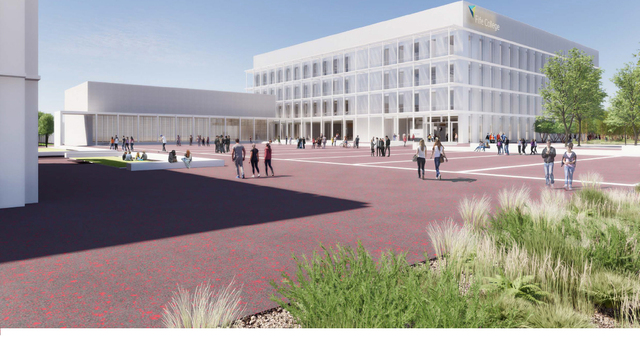Fife College propose a new teaching facility forming part of the wider Dunfermline Learning Campus incorporating two schools on an edge of town location, close to the M90 motorway at the north-eastern edge of Dunfermline. The landscape design approach is focused on the creation of a green and sustainable campus, which acts as a ‘machine for learning’: an aspirational learning environment which becomes a benchmark for further education in Scotland. It seeks to establish an appropriate setting, character and identity to the new College building, and create an inspiring learning and teaching environment for students and staff through a series of interconnected design themes.
The North – South public realm spine is the principle organising element of the overall campus landscape, comprising of a linear park and circulation route which connects the northern and southern ends of the site. It not only has a physical function in acting as a key movement corridor through the campus and providing connectivity with the surrounding communities, but, in a wider sense, is symbolic of the ‘education journey’ from school to college and into business and industry. The linear spine also contains and structures the main green-blue infrastructure for the site as part of a site wide strategy contributing to the landscape framework and the management of surface water of the site. It also forms the strategic landscape division between buildings and car park.
The surface water management strategy forms a crucial part of the landscape design approach. In the context of a changing climate, it adopts a sustainable approach to collecting, controlling and discharging surface water from buildings and hard surfaces which promotes a range of environmental and aesthetic benefits to bring purpose and identity to the campus environment. A ‘stormwater chain’ comprising of a sequence of inter-connected features throughout the site demonstrate a ‘legibility’ to how rainfall is managed through the site, with each stage in the stormwater chain clearly recognisable. A chain of rain gardens form a key part of the landscape identity to the campus, through their design treatment and particular plant selection, which is specifically tailored to the constantly changing dry and wet ground conditions experienced in the rain garden.
The overall site is laid out to promote pedestrian and cycling permeability. Access routes from all directions provide connectivity with the surrounding communities, as well as linking to local bus stops on nearby streets. Routes are direct and rational, incorporating associated landscape treatments and all converge on the central shared civic space between the college and the school in the heart of the campus. Pedestrian routes within the car park direct pedestrians either north or south to join the key east-west paths extending through the car park and which link to the civic spaces adjacent to the college building.
The central shared civic space, strategically located between college and schools, is deliberately conceived as an open area of robust hard landscape, with a ‘generous emptiness’, the lack of obstructions within the space offers the opportunity to easily accommodate multiple and diverse uses and activities for college, school and the local community.
To enable outdoor study and student collaboration during periods of good weather, a sequence of outdoor study areas are incorporated into the overall design layout. Either using the change in level within the rain garden to advantage, or creating specific areas around the site where small groups can gather, a range of locations of differing scales and orientations are provided which offer potential for outdoor collaboration at different times of day and season.

